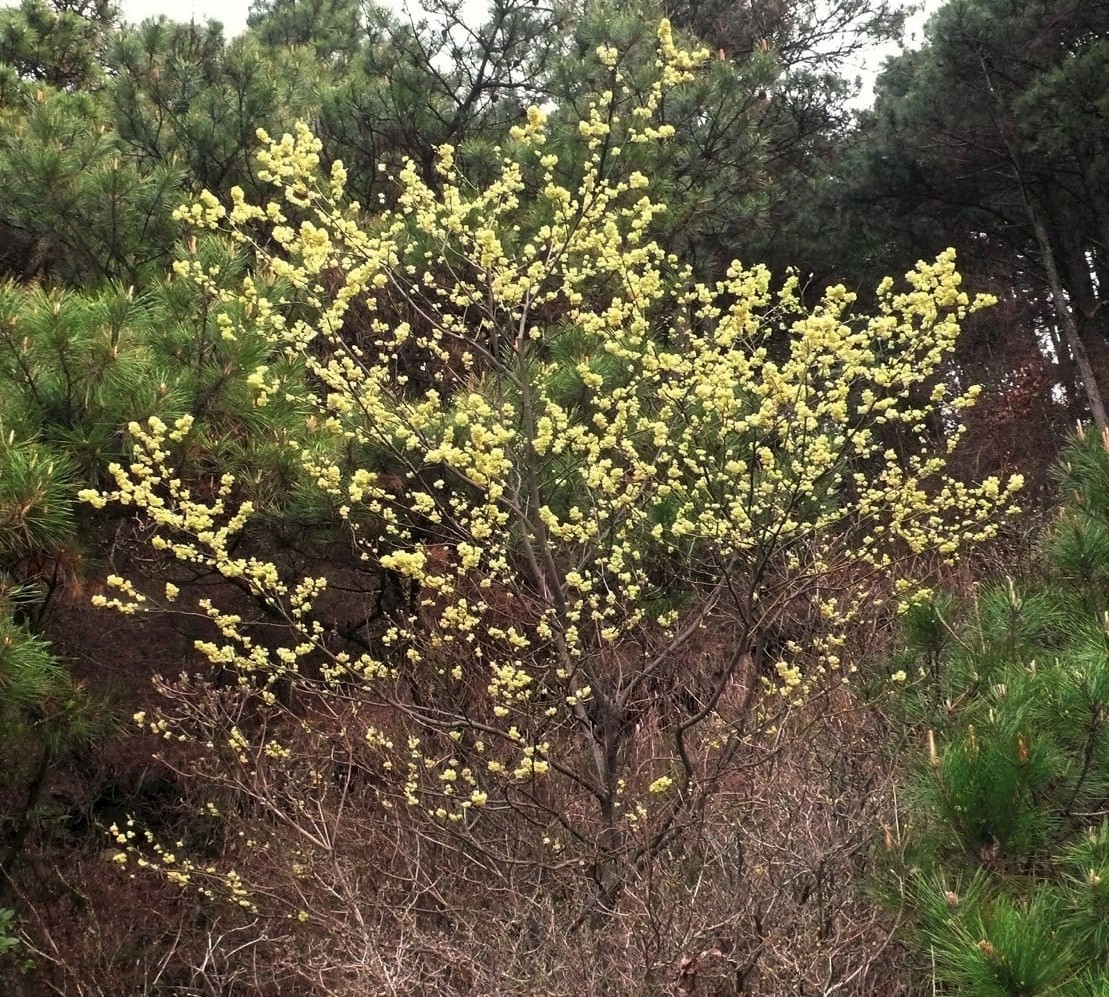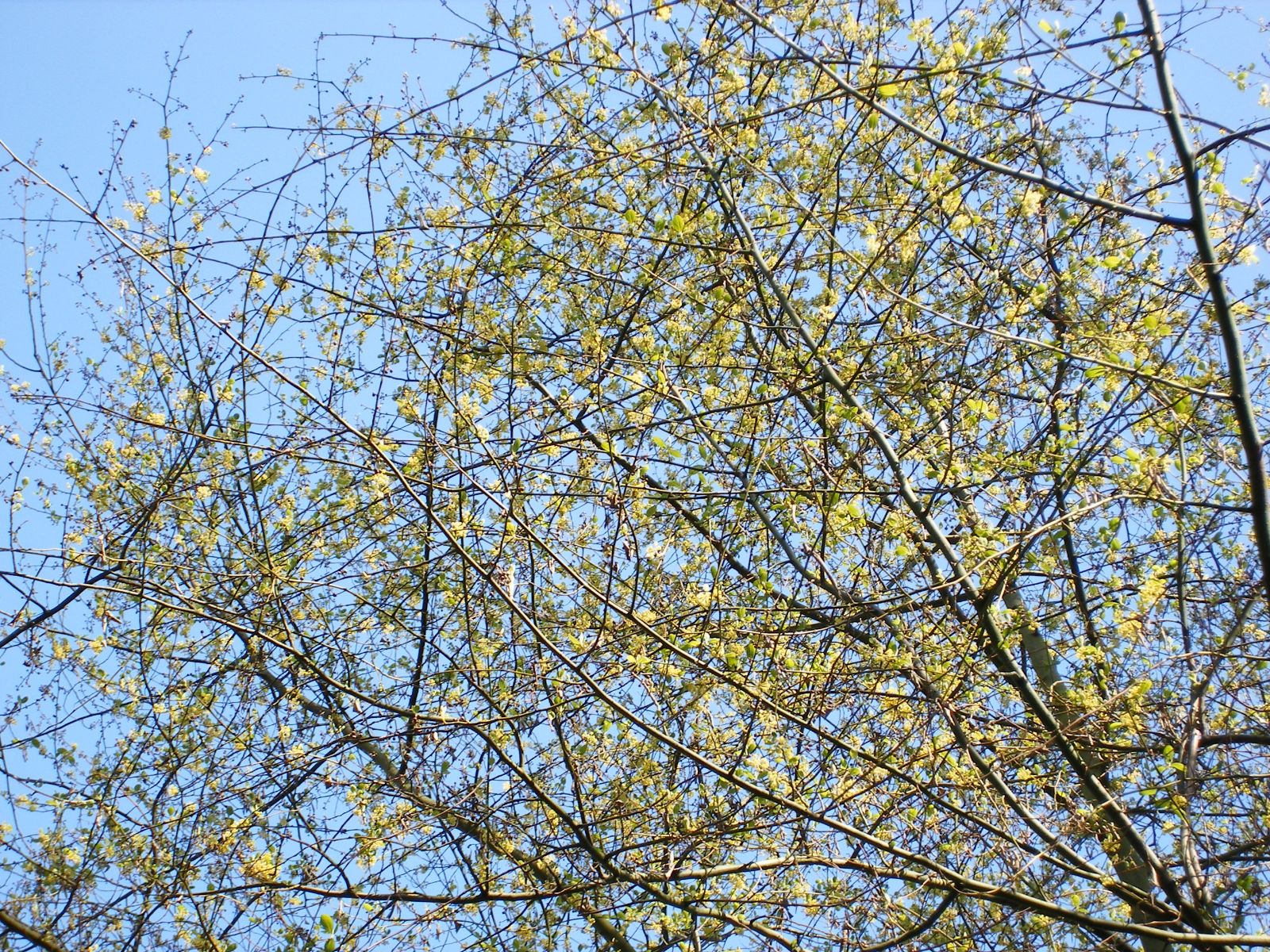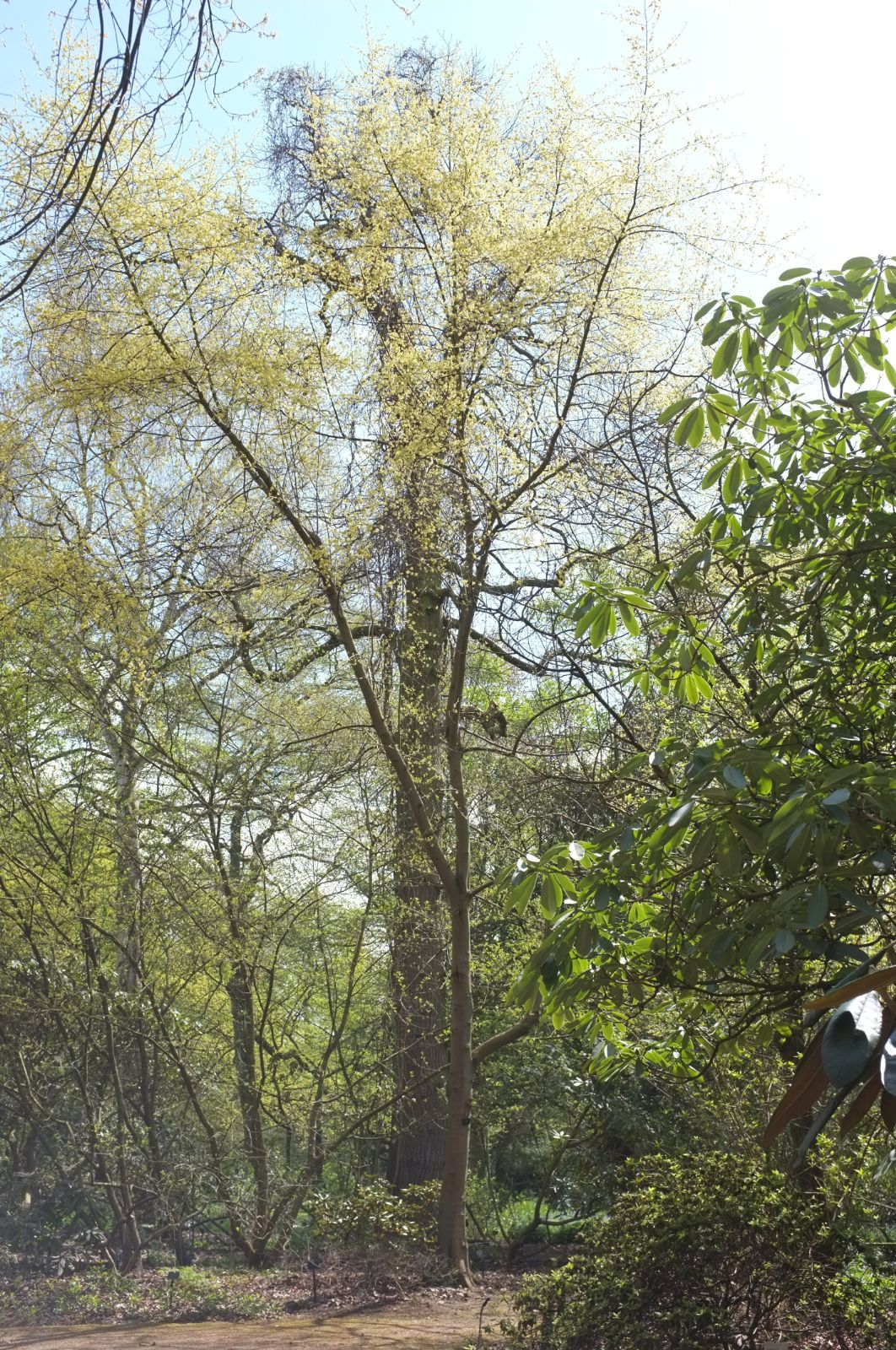Litsea cubeba
Credits
Article from New Trees by John Grimshaw & Ross Bayton
Recommended citation
'Litsea cubeba' from the website Trees and Shrubs Online (treesandshrubsonline.
Genus
Common Names
- Mountain Pepper
- May Chang
Shrub or small tree to 10 m. Branchlets glabrous or covered in silky hairs. Leaves deciduous, alternate, 4–11 × 1.1–2.4 cm, oblong or elliptic, upper surface glabrous, lower surface glaucous, glabrous or covered in silky hairs, 6–16 secondary veins on each side of midrib, margins entire, apex acuminate or acute; petiole 0.6–2 cm long, glabrous. Inflorescences produced before or with the leaves; umbels solitary or clustered with four to six flowers per umbel; flowers 0.8–1 cm diameter, yellowish brown, with six tepals. Staminate flowers with nine stamens. Fruit black, subglobose, ~0.5 cm diameter. Li et al. 2005. Distribution BRUNEI; CAMBODIA; CHINA: Anhui, Fujian, Guangdong, Guangxi, Guizhou, Hubei, Hunan, Jiangsu, Jiangxi, Sichuan, Xizang, Yunnan, Zhejiang; INDONESIA; LAOS; MALAYSIA; MYANMAR; PHILIPPINES; SINGAPORE; TAIWAN; THAILAND; VIETNAM. Habitat Sparse forest, thickets and along streams, rivers and roads, between 500 and 3200 m asl. USDA Hardiness Zone 9–10. Conservation status Not evaluated. Illustration Hudson 2004; NT468.
Litsea cubeba is perhaps best known as the source of a widely used essential oil, revealed through an internet search to be much favoured by aromatherapists and herbalists for its apparently numerous and diverse applications and benefits, ranging from being ‘an effective tool in the fight against acne and excessive perspiration’ to insect repellent. To get the oil, however, one has to have a fruiting tree. Despite its southerly origins it seems to be rather surprisingly tolerant of conditions in the milder parts of our area, and could be tried more widely. Sean Hogan (pers. comm. 2007) finds that it is successful in much of the Pacific Northwest, so long as ample water is available in summer. In Cornwall it is reported to be a fast-growing tree (Hudson 2004), and specimens at Tregehan are now 6 m tall (T. Hudson, pers. comm. 2007). Its pale cream flowers appear in early spring before the leaves expand, and although small are ornamental at that season.



